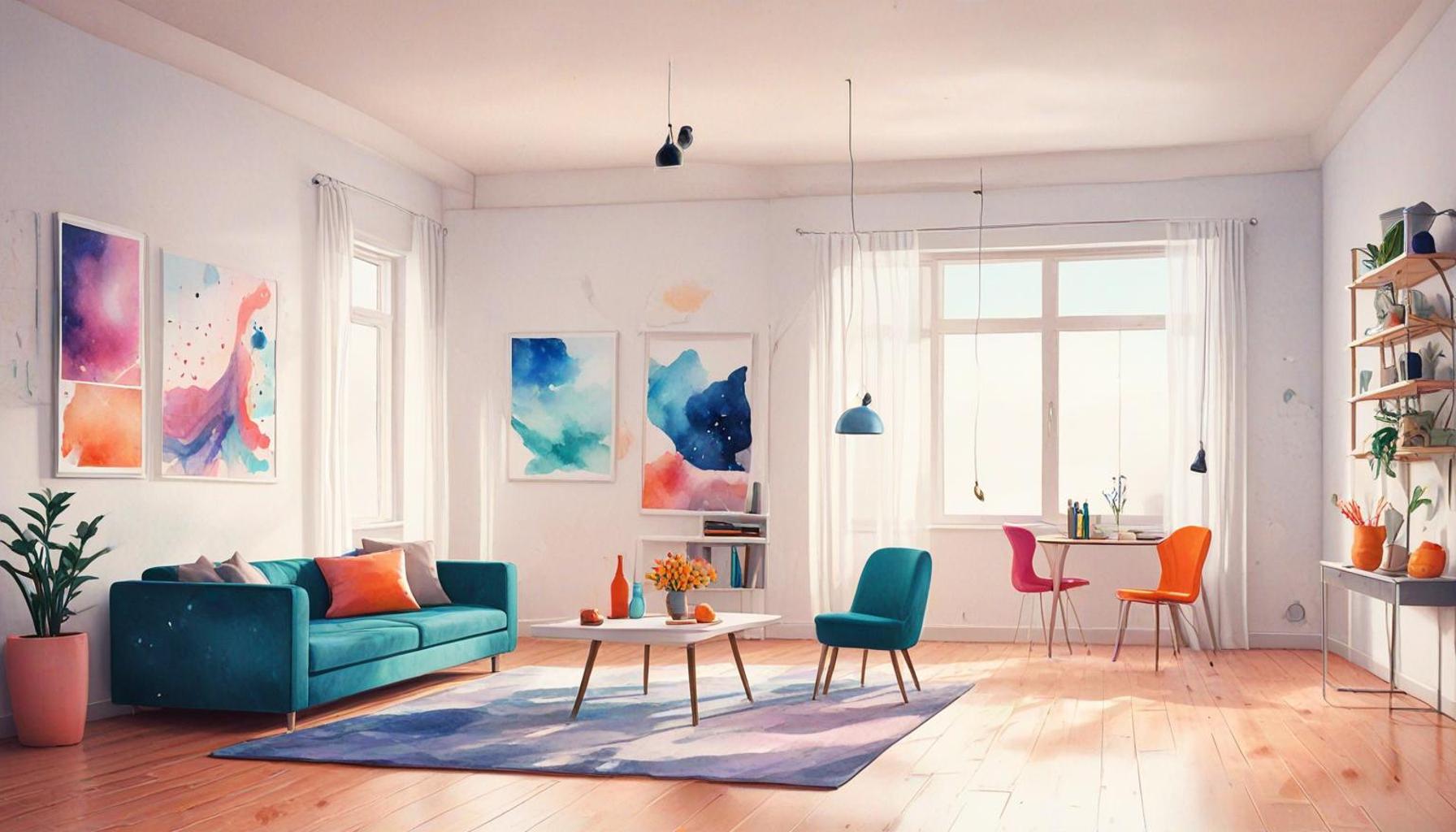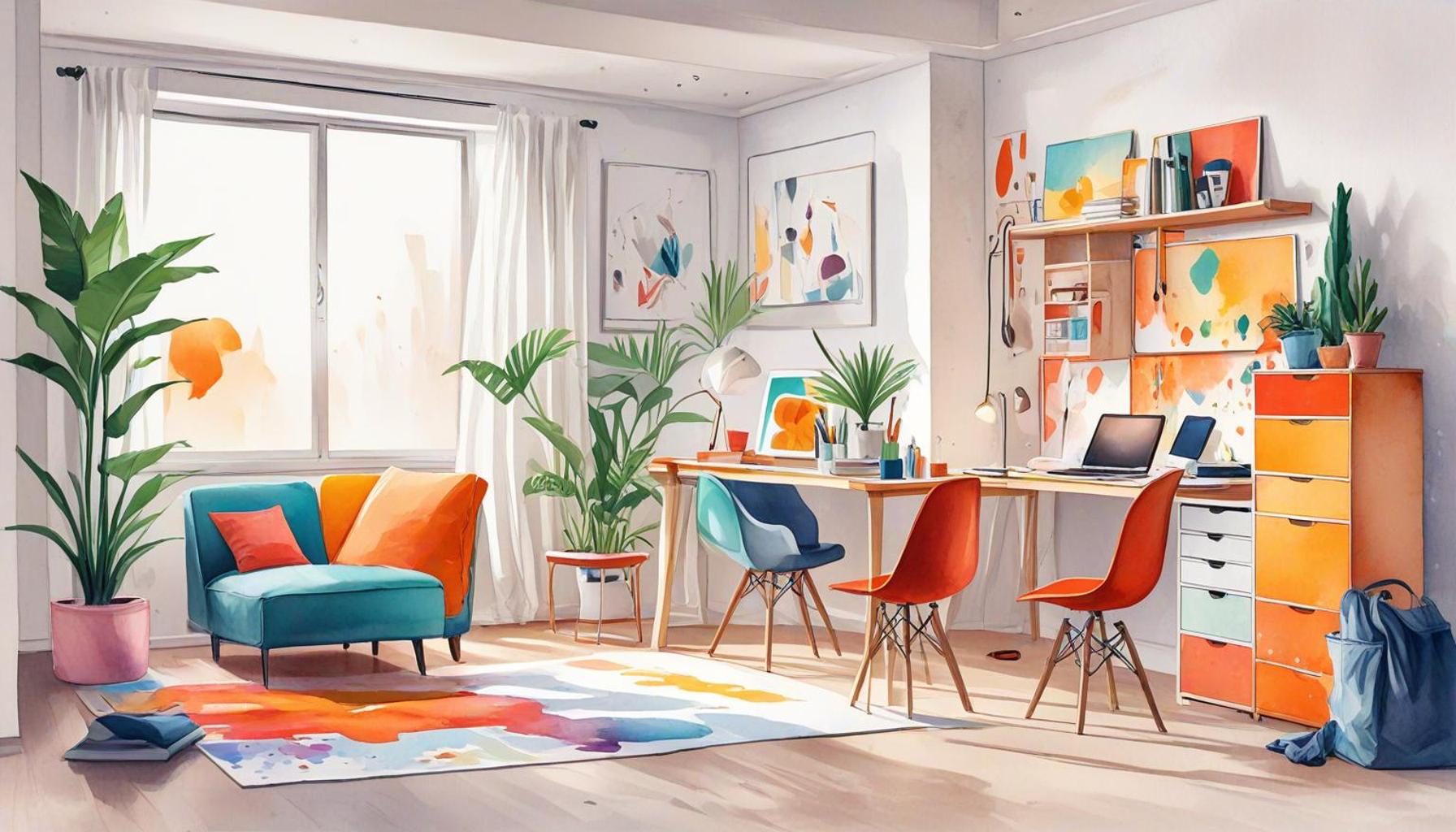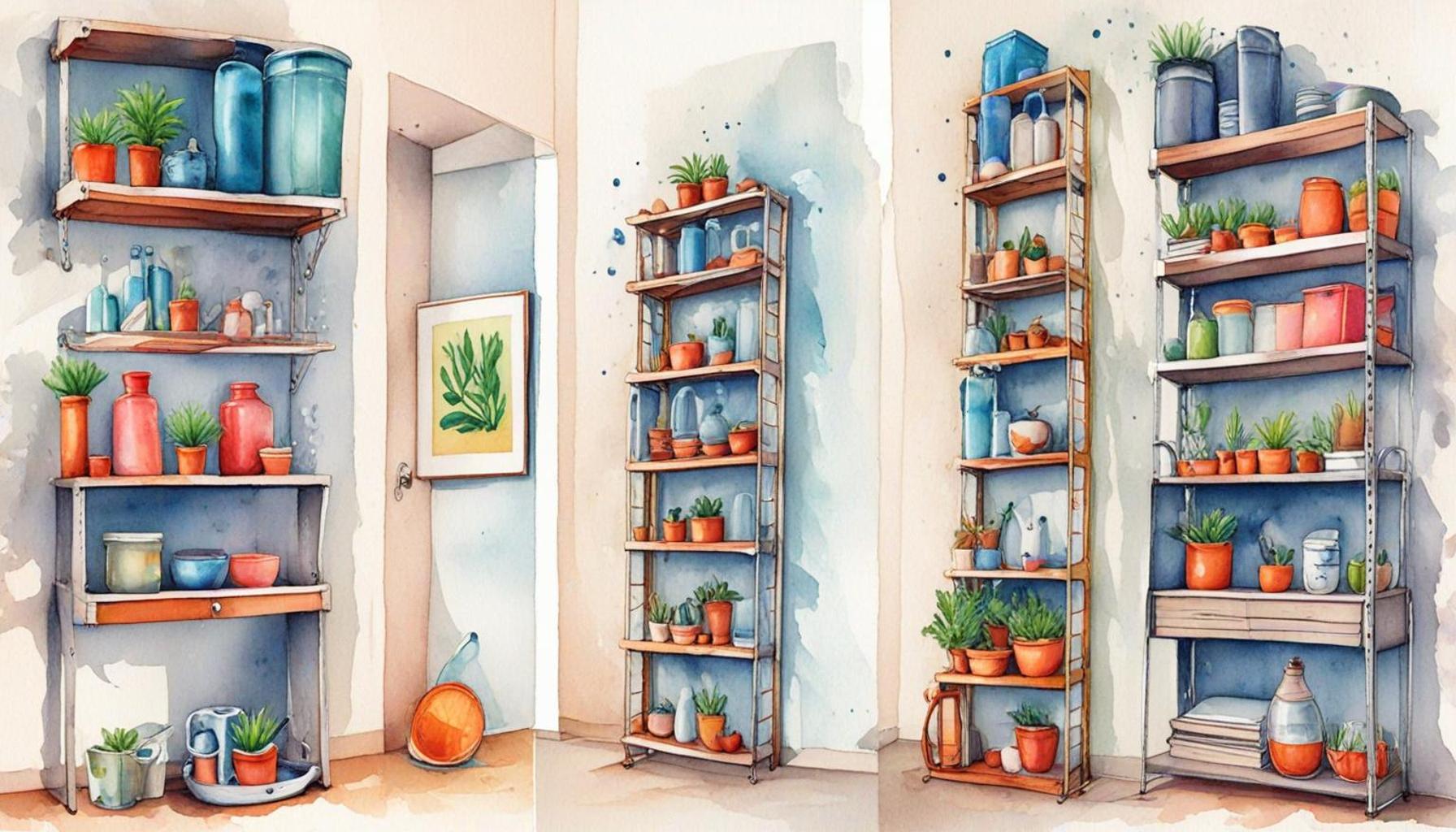How Interior Design Influences Space Perception in Minimalist Environments

The Transformative Power of Interior Design
Upon entering a minimalist environment, individuals often find themselves enveloped in a unique sense of openness and tranquility. This transformative experience is not merely coincidental but rather a direct result of intentional design choices that significantly influence our perception of space. Interior designers meticulously orchestrate various elements such as layout, color, and texture to cultivate a particular atmosphere, ultimately enhancing the occupants’ overall experience.
Color Palettes
One of the foundational aspects of interior design is the strategic use of color palettes. Neutral tones—think soft whites, beiges, and grays—serve as a serene backdrop that can evoke feelings of calmness and spaciousness. For example, a living room painted in warm, muted tones can create a cozy yet airy environment that relaxes the mind. Additionally, the use of color can influence mood; lighter colors generally open up spaces, while darker hues may evoke intimacy. Understanding color psychology allows designers to resonate with the intended emotional responses of a space.
Furniture Selection
Furniture selection is another critical component in shaping spatial perception. Minimalist interiors favor streamlined and functional pieces that prioritize usability without overcrowding the space. For instance, a low-profile sofa paired with a sleek coffee table can maintain a sense of openness while providing comfort and practicality. By eschewing bulky furniture, designers facilitate free movement and a visual flow, which is essential in smaller spaces. This approach not only enhances aesthetics but also allows individuals to engage with their environments in a more meaningful way.
Lighting Design
The role of lighting design cannot be overstated in interior spaces. Both natural and artificial lighting can dramatically alter how we perceive a room’s dimensions and ambiance. For example, large windows that invite ample natural light create a bridge between indoor and outdoor environments, instilling a sense of freedom, whereas strategically placed pendant lights can accentuate architectural features and draw the eye upward. Well-planned lighting can soften harsh shadows, making a space feel more inviting and expansive, which is vital in creating a positive atmosphere.
Minimalist design embodies a philosophy centered on simplicity and functionality, resulting in spaces that are visually uncluttered and emotionally calming. This intentional approach not only declutters the physical environment but also promotes mental well-being, leading to reduced stress and enhanced focus. Consequently, minimalist interiors are increasingly favored in a variety of settings, from contemporary homes to corporate office spaces that prioritize productivity and creativity.

As we delve deeper into the intricate relationship between design and perception, it is clear that understanding the elements of effective interior design can empower individuals to shape their surroundings more thoughtfully. By harnessing concepts like color, furniture, and lighting, one can transform any space into a haven of tranquility and inspiration. Consider exploring these design strategies further and imagine the impact they could have on your own living or working environment.
DISCOVER MORE: Click here to learn about the impact of intentional design
Creating Illusions Through Spatial Arrangement
In addition to color, furniture, and lighting, spatial arrangement plays a pivotal role in shaping how we perceive a minimalist environment. The way elements are organized within a space can either enhance or hinder feelings of openness and tranquility. Designers often employ spatial principles, such as balance, symmetry, and proportion, to create an engaging flow that guides occupants through the area seamlessly.
Open Floor Plans
A prevalent trend in minimalist interiors is the use of open floor plans. This concept effectively eliminates barriers between rooms, facilitating an uninterrupted visual experience that extends the perceived dimensions of the space. By minimizing walls and physical obstacles, designers create an expansive effect, allowing light to travel freely and enhancing overall circulation. Open layouts promote multifunctionality, giving residents the freedom to adapt their environments to various activities, from work to relaxation.
Decluttering Techniques
The minimalist approach inherently encourages decluttering, which not only fosters a more aesthetically pleasing environment but also supports cognitive clarity. By reducing the number of decorative items and furniture pieces, designers create breathing space that invites contemplation and relaxation. Residents are encouraged to keep only what serves a practical purpose or brings joy—this philosophy aligns with the principles of the notorious KonMari Method, which emphasizes mindfulness in decluttering.
When designing minimalist spaces, professionals often suggest:
- Choosing multifunctional furniture that combines utility with style.
- Incorporating hidden storage solutions to maintain a sleek appearance.
- Opting for fewer, more impactful decorative pieces rather than a multitude of smaller items.
Textures and Materials
The use of textures and materials in minimalist design further shapes spatial perception, balancing aesthetics with functionality. Natural materials such as wood, stone, and metal can bring warmth and depth to an otherwise stark environment. Designers often combine varied textures to engage the senses without cluttering the visual landscape. For example, mixing a soft wool rug with sleek glass coffee tables can create a harmonious interplay that enhances both comfort and visual appeal, inviting occupants to interact more intimately with their surroundings.
Ultimately, it is the intentional choices made in the spatial arrangement, decluttering strategies, and material selection that encapsulate the essence of minimalist interior design. These elements work cohesively to influence space perception and foster an environment conducive to serenity and productivity. As we uncover more about the building blocks of minimalist design, it becomes clear that these principles can be leveraged to transform not just our spaces, but the way we experience our daily lives.
Exploring Spatial Dynamics in Minimalist Interior Design
When delving into the relationship between interior design and space perception, it is essential to consider the minimalist approach that emphasizes simplicity and functionality. In these environments, elements such as light, color, and furniture arrangement play a pivotal role in shaping how we perceive space.
The Role of Light and Color
Natural light is a cornerstone of minimalist interior design. Large windows and open spaces allow for an abundance of sunlight, which can make areas appear larger and more inviting. Light colors, particularly whites and soft pastels, reflect light and enhance the feeling of spaciousness. This interplay between light and color not only brightens rooms but also positively affects mood, making spaces feel serene and expansive.
Functionality and Placement of Furniture
Minimalist environments prioritize functionality over excess. When furniture is intentionally placed, it creates fluid pathways and delineates separate areas without the need for physical barriers. For instance, choosing multi-functional pieces like ottomans that double as storage can reduce clutter, leading to a cleaner visual quality. This intentional design fosters a sense of openness and accessibility, allowing individuals to navigate the space effortlessly.
The Psychological Impact of Minimalism
Beyond aesthetics, minimalist interior design has profound psychological implications. Research indicates that less clutter correlates with reduced stress and greater focus. By reducing visual distractions, individuals can experience a heightened sense of clarity and calm. This concept is crucial in environments such as offices and homes where productivity and relaxation are desired outcomes.
Incorporating Biophilic Design Elements
Biophilic design—an approach that seeks to connect interiors to nature—can also enhance space perception in minimalist settings. Integrating elements like indoor plants or natural materials contributes to a feeling of tranquility and spaciousness. The inclusion of such features breaks the monotony of minimalist design and adds depth without cluttering the visual field.
In conclusion, the advantages of minimalist interior design are clear. By understanding how interior design influences space perception, individuals can create environments that are not only aesthetically pleasing but also beneficial for mental well-being and productivity. Embracing these principles invites readers to reimagine their own spaces while discovering the profound impact that thoughtful design can have on their lives.
| Advantage | Description |
|---|---|
| Enhanced Spatial Awareness | The careful use of light and color creates an illusion of more space, making environments more inviting. |
| Reduced Clutter and Distraction | Minimalist design prioritizes simplicity, which helps maintain focus and decreases stress. |
Through understanding these elements, readers can appreciate the profound effects of interior design on space perception in minimalist environments. Discovering how these aspects work together invites deeper exploration into the transformative potential of design in our daily lives.
DIVE DEEPER: Click here to learn how to create efficient spaces at home
The Role of Light in Minimalist Design
Light serves as one of the most crucial factors in shaping our perception of space, particularly in minimalist environments. Natural light is a core component that designers actively seek to maximize through the use of large windows, skylights, and open layouts. The influx of sunlight not only highlights the simplicity of minimalist design but also creates a feeling of openness and connection to the outdoors. Furthermore, researchers suggest that exposure to natural light can enhance mood and productivity, making it an essential element in home and office designs alike.
Artificial Lighting Techniques
In addition to natural light, artificial lighting plays a pivotal role in defining spaces within minimalist environments. Designers utilize various lighting techniques to enhance not just functionality but also the aesthetic quality of a room. Soft ambient lighting, strategically placed task lights, and accent lighting can delineate areas without the addition of physical barriers. For instance, recessed lighting can provide a subtle glow that underscores simplicity, while pendant lights or floor lamps can serve as striking focal points that maintain the minimalist ethos while contributing to a room’s atmosphere.
Moreover, the use of dimmable light fixtures allows residents to adjust the ambiance based on their activities or moods, reinforcing the adaptable nature of minimalist spaces. This versatility positions light as not just an instrument of visibility but also as a significant influence on space perception.
Color Psychology and Spatial Experience
The choice of colors within minimalist interiors extends beyond mere aesthetics; it can altogether transform how space is perceived. Color psychology studies suggest that hues can evoke emotions and affect our physiological responses. Soft, neutral tones like whites, beiges, and grays are particularly favored in minimalist design as they promote a sense of calm and spaciousness. These colors create a backdrop that abstracts the complexities of life, allowing the mind to declutter and find solace.
In certain instances, introducing a pop of color in art or furnishings can serve as a striking contrast to an otherwise monochromatic palette. This contrast not only draws attention but also encourages deeper engagement with the space, prompting occupants to explore their surroundings in a new light. For instance, a vibrant red chair against a white backdrop can create an engaging focal point without overcrowding the visual landscape.
Incorporating Nature: Biophilic Design
Another significant trend in enhancing spatial perception within minimalist environments is the incorporation of biophilic design. This approach emphasizes the harmonious connection between nature and indoor spaces. By integrating elements such as indoor plants, natural textures like stone or wood, and water features, designers can create a more inviting and organic atmosphere. Research indicates that exposure to nature has therapeutic effects, reducing stress and improving overall well-being.
By incorporating greenery and natural elements in a strategic manner, designers can maintain the minimalist aesthetic while adding layers of interest and warmth to a space. This delicate balancing act serves to remind inhabitants of our intrinsic relationship with the natural world, improving both the perception and experience of space.
Ultimately, the diverse strategies explored today—highlighting the role of light, color, and nature—demonstrate how interior design significantly influences space perception in minimalist environments. As these elements work together, they redefine not just the spaces we inhabit, but also the experiences we curate within them.
DISCOVER MORE: Click here to learn effective personal organization strategies
Conclusion: The Transformative Power of Interior Design in Minimalist Spaces
In conclusion, the intricate interplay of various design elements within minimalist environments profoundly shapes our space perception. As we have explored, the thoughtful use of light, color, and natural elements not only enhances the aesthetic appeal of a space, but also fosters emotional well-being and improves functionality. By harnessing natural light through expansive windows and incorporating versatile artificial lighting, designers create environments that resonate with simplicity and openness, inviting occupants to engage meaningfully with their surroundings.
Furthermore, the selection of colors plays a critical role. Gentle, neutral hues instill tranquility, while carefully placed vibrant accents provide focal points that stimulate interest without overwhelming the minimalist ethos. This strategic use of color informs how individuals perceive, interact with, and feel within their spaces, promoting a sense of balance and calm amid our fast-paced lives.
Finally, the incorporation of biophilic design bridges the gap between nature and architecture, reminding us of our intrinsic connection to the natural world. By integrating flora, organic textures, and natural light, minimalist interiors can evoke feelings of serenity and well-being, enriching our experiences within these spaces.
As we continue to explore and embrace minimalist design principles, there lies an opportunity to redefine our spaces and experiences. The careful consideration of how interior design influences space perception in minimalist environments offers a powerful avenue for creating interiors that resonate with our values and enhance our quality of life. Whether at home or in the workplace, understanding and applying these design strategies can lead to richer, more fulfilling experiences in our daily lives.


